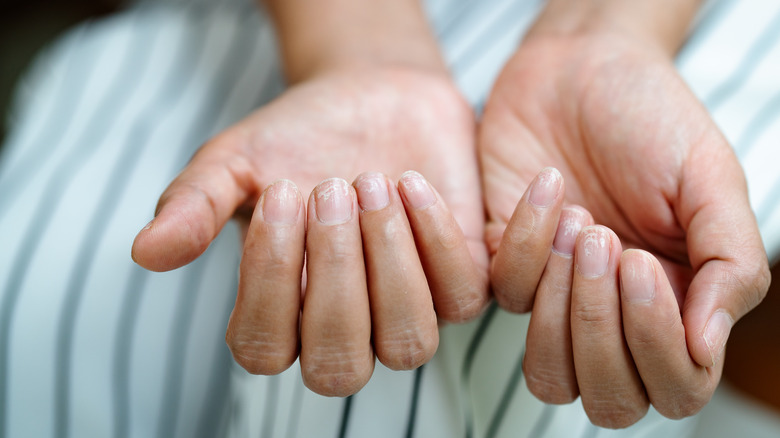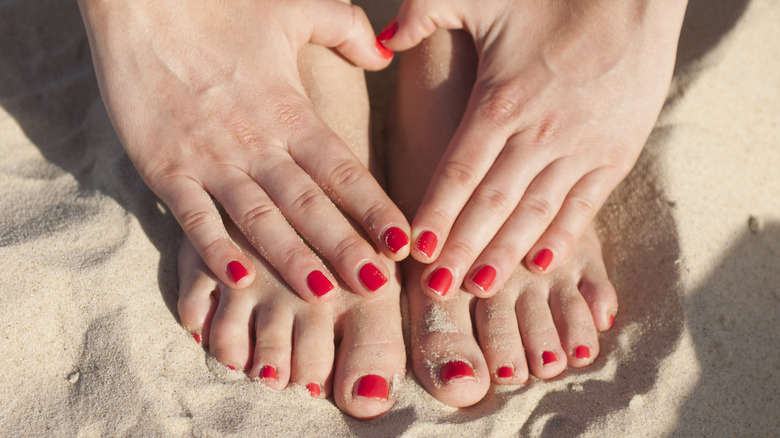The Best Ways To Treat Nail Pitting
The texture of fingernails and toenails is typically smooth, though the occasional hangnail or overgrown cuticle may tamper with the appearance of a nail. However, sometimes nails can develop small indents or depressions that can become textured ridges after a period of time. If this is the case, then you may have a condition called nail pitting, according to Healthline. Commonly associated with nail psoriasis, as well as psoriasis of the skin, nail pitting can be identified by the indented texture on fingernails or toenails.
The experts at the Cleveland Clinic define nail psoriasis as stemming from an autoimmune condition. In addition to small indents, otherwise known as pits, in a nail's appearance, there may also be discoloration of nails or damage to the integrity of afflicted nails. Nail psoriasis and nail pitting aren't contagious, so you won't risk passing it along to others and shouldn't worry about touching things should you notice a pit on one of your nails. If you feel insecure about the appearance of your nails or if you experience nail pitting, utilizing nail polish or getting a manicure can superficially cover up the indented texture of your nails. Beyond temporary ways to conceal nail pitting through nail polish and similar means, there are medical treatments that can help you manage nail pitting and nail psoriasis. Here's what you should know about the best ways to treat nail pitting.
There are many ways to treat nail pitting
In many mild cases, nail pitting won't require medical treatment and won't pose any significant threat to health, per MedicalNewsToday. However, if you are concerned by the indentations on your nails or feel overly self-conscious about the appearance of pitting, scheduling an appointment with your doctor to go over possible treatment options can be a helpful start. Most likely, you'll be referred to a medical professional who specializes in nails and skin. If severe enough, the nails affected by nail pitting may be removed, which can be conducted surgically or through the use of an ointment that takes about a week to successfully remove nails.
When it comes to medications to treat nail pitting, there are several options. Healthline reports that immunosuppressant medications, like methotrexate and cyclosporine, are effective, though they may also carry side effects of harming organs so you should consult with your doctor if you wish to pursue immunosuppressant prescriptions. On the safer end of treatment options, taking supplements of vitamin D3 can be helpful in treating nail pitting, and similarly, there are avenues like light therapy and phototherapy that can better the appearance of nails afflicted by the condition. Other options available from a medical office include corticosteroid injections into the nail bed of each nail with pitting, as well as topical creams that can be applied but carry the drawback of potentially only being able to reach the nail and not the nail bed.


